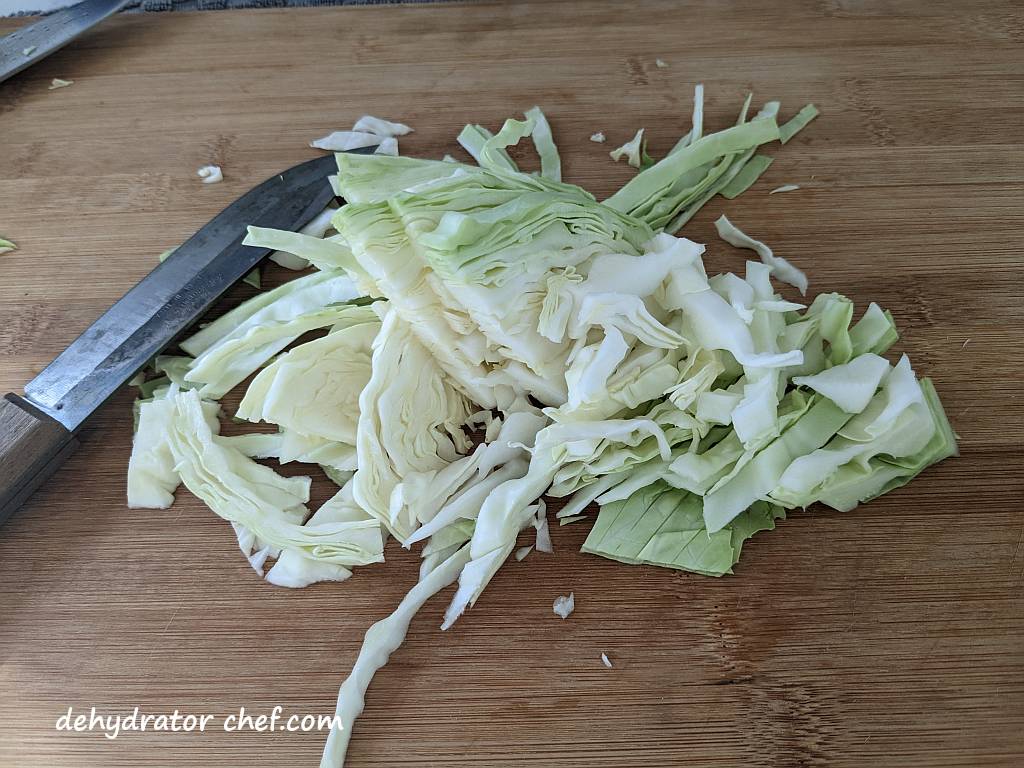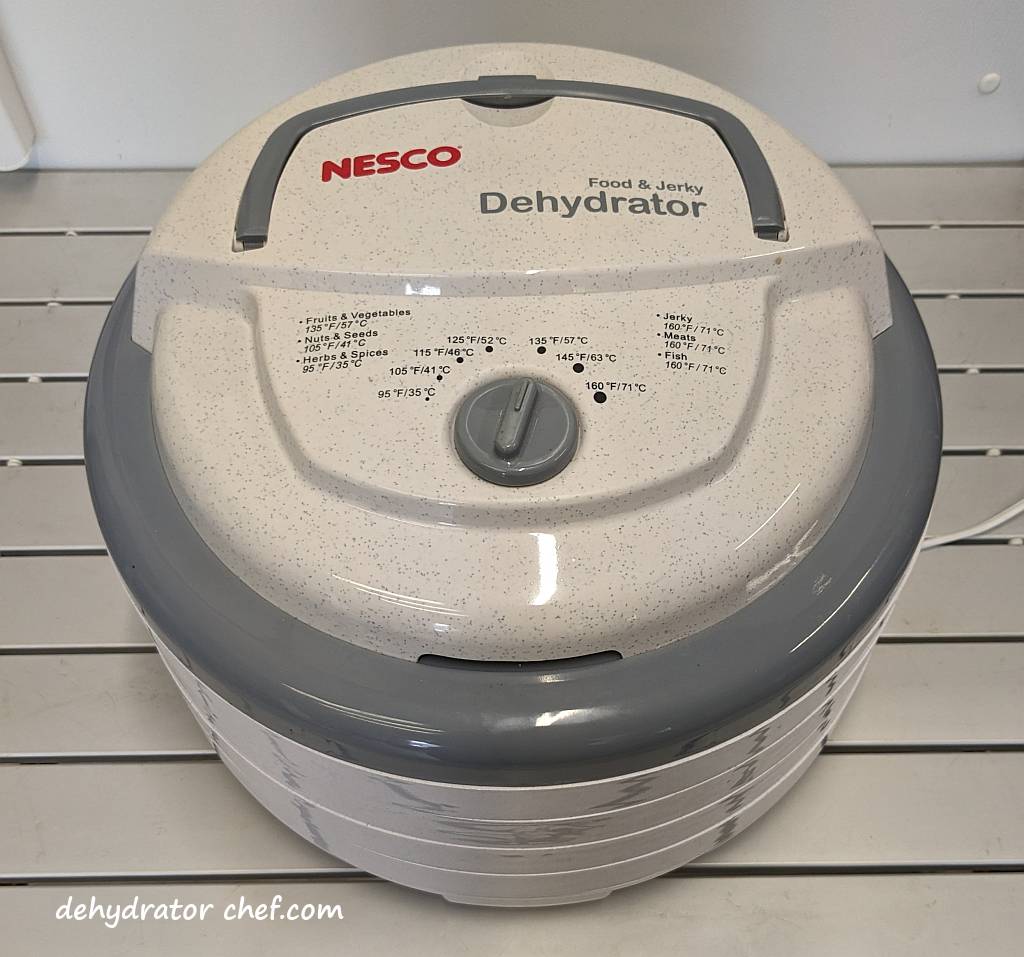In this section, we’ll talk about the essential tools and equipment you’ll need for dehydrating vegetables. If you’re a beginner, having the right tools and equipment is vital to ensure successful and efficient food dehydration.
We are going to introduce you to the basic tools required for vegetable dehydration, from the indispensable food dehydrator to the handy kitchen knife and essential cutting board. We’ll also cover the significance of a blanching pot and airtight containers in preserving the freshness and longevity of your dehydrated vegetables.

Additionally, choosing the right dehydrator is crucial for achieving optimal results. We’ll provide you with valuable tips to consider when selecting a dehydrator so that you can find the perfect fit based on your budget and specific needs.
Whether you’re an avid camper, hiker, someone seeking to create nutritious and lightweight meals for long-term storage, or you simply want to embrace food preparedness and self-reliance, this section will set you up for success. So, let’s get started.
Table of Contents
Basic Tools for Vegetable Dehydration
To successfully dehydrate vegetables, you’ll need a few essential tools that will make the process easier and more efficient. Here are the basic tools you’ll need:
Food Dehydrator: A food dehydrator is the most important tool for vegetable dehydration. It is a device specifically designed to remove moisture from food. Dehydrators come in various sizes and types, but for beginners, a simple and affordable stackable dehydrator is highly recommended.
Don’t overlook accessories such as removable fruit roll sheets and removable mesh screen inserts. You’re going to need them, one for each tray. Refer to the food dehydrator owner’s manual and the manufacturer’s website for more information.
Knife: A sharp kitchen knife is essential for slicing vegetables into thin, uniform pieces. Choose a knife with a comfortable grip and a blade suitable for cutting vegetables. The ubiquitous Chef’s knife will work fine, nothing fancy is needed. Remember to exercise caution and proper knife-handling techniques while using it.
Cutting Board: A sturdy cutting board provides a stable surface for chopping vegetables. Opt for a cutting board made of food-safe material, such as bamboo or plastic. Ensure it is large enough to accommodate the vegetables you’ll be working with.
Colander: A colander comes in handy for rinsing vegetables before preparation, ensuring they are free from dirt and debris.
Blanching Pot: Blanching is a pre-treatment technique that involves briefly boiling vegetables in water with a small amount of citric acid before dehydrating them. This helps retain their color, texture, and nutritional value. Choose a pot that is large enough to hold a good amount of vegetables and has a tight-fitting lid.
Airtight Containers: After dehydrating your vegetables, proper storage is crucial to maintain their freshness and longevity. Airtight containers, such as glass jars or plastic containers with tight-sealing lids, are ideal for storing dehydrated vegetables. Make sure the containers are clean and completely dry before use.
Choosing a Suitable Food Dehydrator
Selecting the right food dehydrator is essential for successful vegetable dehydration. Consider the following factors when choosing a suitable dehydrator based on your budget and needs:

Budget: Dehydrators come in a range of prices, so it’s important to determine your budget before making a purchase. Entry-level dehydrators are typically more affordable and suitable for beginners.
Size and Capacity: Think about how much food you’ll be dehydrating at a time. Dehydrators are available in various sizes, with different tray capacities. If you plan on dehydrating large batches of vegetables or have limited time for multiple rounds of dehydration, opt for a larger dehydrator with more trays.
Heat Distribution and Airflow: Look for a dehydrator that provides even heat distribution and consistent airflow. This ensures that all your vegetables dehydrate uniformly, eliminating the need for constant rotation or uneven drying.
Temperature Control: Temperature control is crucial for vegetable dehydration. Different vegetables require specific temperatures to retain their nutritional value and achieve optimal results. Choose a dehydrator that offers adjustable temperature settings to accommodate various types of vegetables.
Accessories: Check out what accessories are available. Extra trays, fruit roll sheets, and mesh sheets are all essential must-haves.
Check out our Top 10 Features to Look for in a Food Dehydrator guide here.
Summary
If you’re a beginner, it’s not necessary to invest in a high-end dehydrator right away. Start with a basic model that meets your requirements and fits within your budget. As you gain experience and explore more advanced techniques, you can consider upgrading your dehydrator. With the right tools and equipment, you’ll be well-prepared to embark on your vegetable dehydration journey. In the next section, we’ll delve into the process of preparing your vegetables for dehydration
Next: . Safety and Hygiene Practices for Dehydrating Food, Coming Soon
Previous: Dehydrating Vegetables for Storage: A Beginner’s Guide on How to Dehydrate and Store Vegetables
